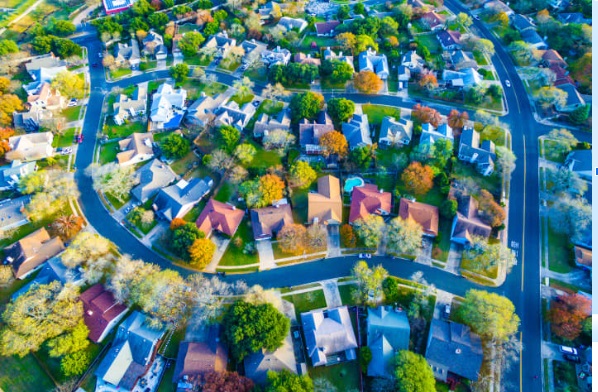Investing in multi-family real estate can be a lucrative path to generating passive income and building wealth. As we approach 2024, savvy investors are exploring various strategies to maximize their returns while minimizing risk. In this article, we’ll delve into the top strategies for passive income multi-family real estate investments in 2024.
Value-Add Investing

Value-add investing involves acquiring underperforming or undervalued multi-family properties and implementing strategic improvements to increase their value and rental income. This strategy often includes renovating units, enhancing common areas, and optimizing operations to attract higher-paying tenants. By boosting the property’s value through value-add improvements, investors can generate higher passive income streams and potentially realize significant returns upon sale.
Syndications and Real Estate Investment Groups
Syndications and real estate investment groups (REIGs) allow investors to pool their resources and invest in larger multi-family projects that may be out of reach for individual investors. These structures often provide access to institutional-quality properties and professional management, making them an attractive option for passive income seekers. Investors in syndications and REIGs can benefit from the expertise of experienced sponsors while enjoying the potential for stable cash flow and long-term appreciation.
Turnkey Rental Properties
Turnkey rental properties are multi-family assets that are already renovated, leased, and managed by a professional property management company. This strategy appeals to passive investors who want to generate income without the day-to-day responsibilities of property management. Turnkey properties offer the potential for immediate cash flow, as the units are already occupied by tenants. However, investors should carefully evaluate the property’s financials, location, and management team to ensure long-term success.
Real Estate Investment Trusts (REITs)
REITs are publicly traded companies that own and operate income-producing real estate. By investing in REITs, passive investors can gain exposure to a diversified portfolio of multi-family properties without the need for direct ownership or management. REITs offer the potential for regular dividend payments and the ability to buy and sell shares easily on public exchanges. While REITs may not offer the same level of control as direct ownership, they provide a convenient and liquid way to invest in multi-family real estate for passive income.
Leveraging Professional Property Management
Regardless of the investment strategy, leveraging professional property management is crucial for generating passive income from multi-family properties. Professional property managers handle day-to-day operations, including tenant screening, maintenance, and rent collection, allowing investors to enjoy the benefits of passive income without the hassle of hands-on management. By partnering with experienced property managers, investors can optimize rental yields, minimize vacancies, and ensure the long-term success of their multi-family investments.
Conclusion
Investing in multi-family real estate can be a powerful tool for generating passive income and building wealth. By exploring strategies such as value-add investing, syndications, turnkey rentals, and REITs, investors can find opportunities that align with their risk tolerance and investment goals. By leveraging professional property management and focusing on optimizing rental yields, investors can position themselves for success in the multi-family real estate market in 2024 and beyond.
FAQs:
- What are the key benefits of investing in multi-family real estate for passive income?
- Multi-family real estate investing offers the potential for stable cash flow, long-term appreciation, and tax advantages, making it an attractive option for passive income seekers.
- How can investors mitigate risk in multi-family real estate investments?
- Investors can mitigate risk by conducting thorough due diligence, partnering with experienced sponsors or property managers, and diversifying their portfolios across different markets and property types.
- What is the role of professional property management in generating passive income from multi-family properties?
- Professional property managers handle day-to-day operations, optimize rental yields, minimize vacancies, and ensure the long-term success of multi-family investments, allowing investors to enjoy passive income streams.
- How do syndications and real estate investment groups (REIGs) facilitate passive income from multi-family properties?
- Syndications and REIGs enable investors to pool their resources and invest in larger multi-family projects, often with the guidance of experienced sponsors and professional management, providing access to institutional-quality properties and the potential for stable cash flow and long-term appreciation.
- What are the advantages and disadvantages of investing in multi-family REITs for passive income?
- REITs offer the potential for regular dividend payments, diversification, and liquidity, but investors have less control over individual properties compared to direct ownership. Careful research is needed to select well-managed REITs with strong portfolios and growth prospects.
As the world evolves, so does the real estate landscape, particularly in the multifamily sector. In 2024, various trends reshape how developers, investors, and residents perceive and engage with multifamily properties. From technological advancements to shifting demographics, here are five emerging trends in multifamily real estate for 2024.
Sustainable Living Spaces:

With a growing focus on environmental sustainability, multifamily properties are adapting to incorporate eco-friendly features and practices. Developers are increasingly integrating renewable energy sources such as solar panels, implementing energy-efficient appliances, and incorporating green spaces within communities. Additionally, initiatives like water conservation measures and waste reduction strategies are becoming standard in multifamily developments. Sustainable living spaces appeal to environmentally conscious tenants and contribute to cost savings and long-term value for property owners.
Smart Building Technologies:

Advancements in technology are revolutionizing multifamily real estate with the integration of smart building technologies. From smart thermostats and automated lighting systems to keyless entry and remote property management platforms, these technologies enhance convenience, security, and efficiency for residents and property managers. IoT (Internet of Things) devices enable real-time monitoring and control of various building systems, optimizing resource usage and improving overall tenant experience. As the demand for connected living spaces grows, expect widespread adoption of smart building solutions across multifamily properties in 2024 and beyond.
Flexibility in Design and Amenities:

The preferences and lifestyles of renters are evolving, driving the need for greater flexibility in multifamily property design and amenities. Developers focus on creating versatile living spaces that accommodate diverse tenant demographics and changing needs. This includes flexible floor plans that easily adapt to different living arrangements, such as co-living or multigenerational housing setups. Additionally, communal amenities like coworking spaces, fitness centers, and pet-friendly facilities are gaining popularity as tenants prioritize convenience and social connectivity. By offering a mix of amenities and flexible living options, multifamily properties can attract a wider range of tenants and foster a sense of community.
Rise of Urban Suburbs:

Urban suburbs are gaining traction as more people seek the benefits of suburban living without sacrificing urban conveniences. These mixed-use developments combine elements of both urban and suburban environments, offering walkable neighborhoods with access to retail, dining, and entertainment options. With the rise of remote work and flexible schedules, urban suburbs provide an attractive alternative for renters looking to balance city living and suburban tranquility. Multifamily developers are capitalizing on this trend by investing in suburban markets with strong job growth and transportation infrastructure, creating vibrant communities that cater to modern urban dwellers.
Emphasis on Health and Wellness:

The COVID-19 pandemic has heightened awareness of health and wellness concerns, prompting multifamily properties to prioritize resident safety and well-being. In 2024, expect to see an increased focus on health-centric design features and amenities, such as air purification systems, outdoor recreation areas, and wellness programming. Properties that promote physical and mental well-being will appeal to health-conscious tenants seeking a holistic living experience. Additionally, integrating telehealth services and fitness technology platforms allows residents to prioritize their health from the comfort of their homes. By prioritizing health and wellness initiatives, multifamily properties can differentiate themselves in a competitive market and attract discerning renters.
Conclusion:
The multifamily real estate landscape is evolving rapidly, driven by technological innovations, demographic shifts, and changing consumer preferences. In 2024, sustainability, technology, flexibility, urban suburbs, and health and wellness will emerge as key trends shaping the future of multifamily properties. By embracing these trends, developers and investors can capitalize on opportunities to create innovative, resilient communities that meet the evolving needs of tenants in the years to come.
